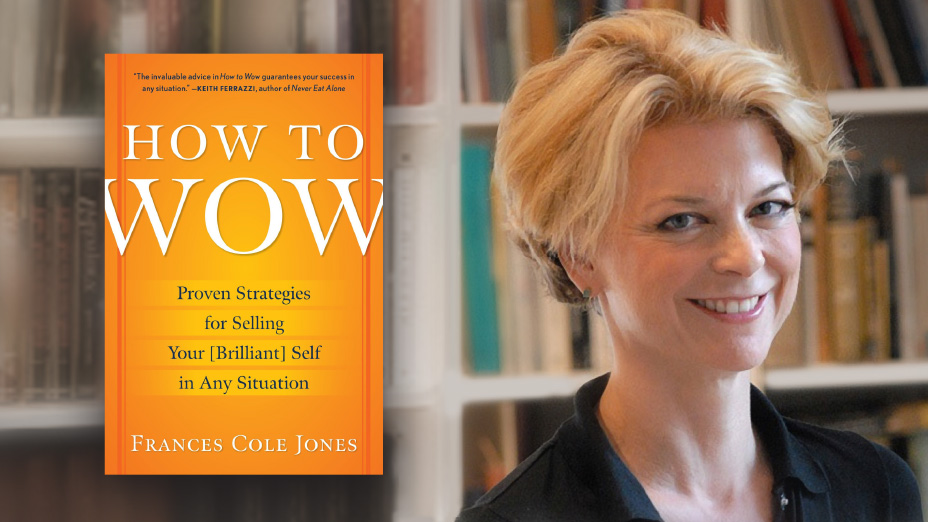In sports, the ability to shave a hundredth of a second off your time can be what determines the difference between the gold and silver medal. In turbulent economic times, the same is true: the victor is determined by the smallest of margins.
How, then, can you ensure you’re standing on the winning platform? The same way the athletes do: by developing the habits, skills and disciplines that will stand you in good stead, regardless of the state of the playing field.
regardless of the details of the situation, if you aren’t getting the response you want, or expect, you need to look at your message and–just as importantly–at how you are expressing it.
What are some of the qualities that dull your edge? Everything from the seemingly innocuous un-examined habit, through disorganization and trepidation, all the way to the flat out fear that paralyzes your thinking, not to mention your ability to act in your own best interest. For myself, I know that when I’m off my game I tend to adopt the coping skills of Lucy Ricardo - changing what might have been a manageable situation into an operatic showdown at the Copacabana.
Given this, over the years I’ve discovered, developed, and learned from the brightest stars with whom I work, a number of ideas, habits, and tools that help me present my best self regardless of the circumstances. The tips and tools offered in How to Wow, then, are things you must do to fine tune how you show up every day -- mental weight lifting, if you will. And, in the same way those seemingly pointless bicep curls and leg presses you do in the gym day to day ensure you have the strength you need to carry your kids to safety if your house is on fire, these tips and tools will ensure you have the mental strength, technical acumen, and people skills you need when your interview gets moved from tomorrow to today, to stay off your C-level executives “early retirement” short list, and, ultimately, to grab that promotion.
THE BOTTOM LINE
Here’s the bottom line of what I teach: regardless of the details of the situation, if you aren’t getting the response you want, or expect, you need to look at your message and - just as importantly - at how you are expressing it. Often, with only a few small adjustments, you can go from a near miss to a slam dunk, from a “that was nice” presentation to one that knocks their socks off, from a mediocre meeting to one that fires up each and every participant.
When you want to make a good impression no detail is too small. No amount of advance preparation is too much. No word choice is unimportant. The shirt you wear, the chair you sit in, the thank-you note you write afterward should all be carefully considered, and ultimately compound the impression of someone who’s calm, confident, and in- command.
SMALL CHANGES, BIG DIFFERENCES
What are some examples of small changes with big differences?
I was once called by a magazine to come in and speak to one of their editors. He was continuously tapped by television shows as the go-to guy for reviews of current movies. The trouble, though, was that none of the shows ever aired the tapes. The magazine couldn’t understand it: he was smart, handsome, articulate…
This is my idea of catnip. In I went. In came the client. He was indeed handsome. He shook hands with me, sat down, crossed one leg so his ankle was on his opposite knee, threw an arm over the chair’s back, tilted himself way back, opened his mouth… My work was done. I knew what the stumbling block was. He was coming across as “too cool for school.”
It’s always important to be aware of your physicality - how you are taking up space. Leaning way back in your chair, throwing your arm over the back of your chair, putting one ankle on top of your other knee so you give your listener a crotch shot, all “reads” for your viewer as “I am way too cool to be here.” It almost doesn’t matter what you say after that - your listener has a distorted impression of you.
Although we worked on some messaging, etc. that day, my primary advice to him was to keep both his feet on the floor, his hands where I could see them, lean in toward his interviewer, and smile. The result? The very next piece that he taped got used. He was thrilled.
His bosses were thrilled. And I’m sure (if you’re a movie-goer) you are thrilled because he gives great advice about going to the movies.
What’s another example of a small change with a big difference?
One day I got a call from a client who had just been promoted a mid-level manager to a top spot. I asked them if there was anything in particular I should be aware of. Well, they said, he’s smart and enthusiastic - which is great, but we’re worried he doesn’t come across as ‘manager material.’
Next, I called his office to make an appointment. Here’s what his voicemail message sounded like: “Hi.This. Is.Joe.I’m.Not.Here.Leave.A.Message. Or.Call.Lewis.At.212…”
Instead of sounding competent, calm, and in command, he sounded like he was trying to find his way out of a burning building.
Was it Joe’s goal to come across this way? Of course not. It was simply that no one had ever told him how important this seemingly small detail was to the overall impression he left behind. Although we worked on a lot in his session, we began by re-recording his voice mail message. Now, if you should call, you’ll hear a message that’s authoritative, warm and welcoming manager material, which he is.
HOW TO USE HOW TO WOW
How to Wow offers hundreds of examples from my years of work in the public presentation arena. I present these not in chapters, but in a one to two page “search-and-destroy” format to make it easy for you to find the information needed in your situation - meeting, lunch, cold call, PowerPoint presentation - so you can begin employing it, and enjoying the benefits of it, immediately.
There are no “rules” because I recognize that each of you comes to the table with a unique set of attributes and circumstances. More importantly, I know each of you is smart enough to know what will work for you and your circumstances: what will help give you the confidence to speak your mind in a meeting, motivate your team under deadline, or negotiate your business deal over pasta puttanesca.
I will know I’ve succeeded when you begin to doubt your doubts - to be confident in your confidence. Because when you are, you are free to be enthusiastic, committed, authentic.
The you that you know yourself to be when you’re at your best.





.png)
%20(1).png)



What Did You Think?